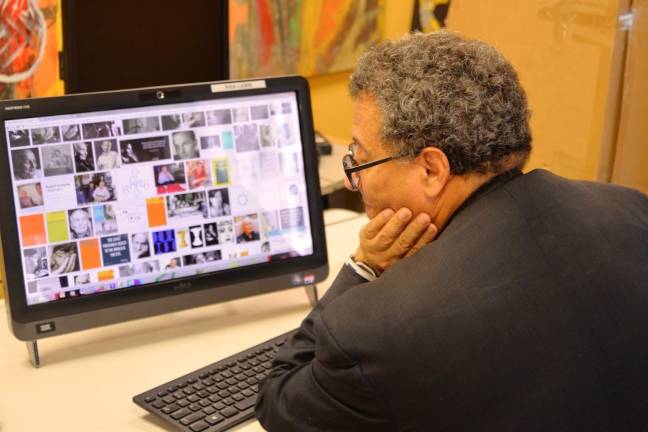Bringing Tech to Seniors
On Roosevelt Island, a new pilot program aims to enhance social connections and quality of life for older residents

When asked to envision a technology junkie, most people might imagine a lanky young man sitting at a computer, fingers dancing across keys at the speed of light. But on Roosevelt Island, innovative tech users will soon take a different shape: homebound and disabled members of the Carter Burden Roosevelt Island Senior Center.
The Carter Burden Network is an organization that offers social services to aging New Yorkers and has established four senior centers around the city, one of which is on Roosevelt Island. Recently, the network proposed the installation of voice-controlled Amazon Echo Show video-streaming devices in the homes of individuals with compromised mobility in an attempt to combat loneliness.
Speaking on behalf of William Dionne, Carter Burden Network’s executive director, the organization’s Grant and Foundations Officer Rina Desai said, “The goal of the project is to enhance independence, connectedness, and quality of life for the [participants].” Roosevelt Island was chosen as the location for the pilot program due to its relative geographical isolation, as its remoteness magnifies many of the issues faced by those who are homebound.
Approximately 100 applicants were screened for the project, but only 40 will be chosen, and the selected individuals will have to meet eligibility requirements. The project stipulated that participants had to either be homebound seniors over 60 or disabled adults, have both Wi-Fi and a phone with SMS capabilities in order to accommodate the Amazon Echo Show’s needs, and agree to data collection by Cornell Tech Graduate School. Participants will receive technological assistance provided by the Roosevelt Island Senior Center’s technology instructor, have access to features meant to improve quality of life such as healthy cooking videos, guided meditations, and podcasts, and be able to watch live streams of educational presentations being done at the center.
Helping Older Adults Socialize
Funding for the project, which amounted to $55,000, was provided by the New York Community Trust, a public charity and grant-making foundation committed to bettering the lives of New Yorkers. Individuals, many of whom are New Yorkers, can establish charitable funds with the Trust, some of which are permanent.
When asked why one would choose to be philanthropic through the Trust rather than individually, Senior Communications Officer Amy Wolf emphasized the power of collective giving and the Trust’s ability to ensure that donations will be spent in a manner that adapts to the city’s changing needs. The grant for the senior center emblemizes the Trust’s devotion to imaginative spending, as the money used was donated by Katherine Park in 1982, whose fund was specifically designed to help older adults socialize.
“In 1982, Katherine Park may have given that money to go to social programs, but she never would have known what could have happened,” explained Rachel Pardoe, the Trust’s program officer for Healthy Lives: Older Adults, People with Disabilities and Animal Welfare. “Because she gave [her money] to the Trust, we were able to be innovative with that funding and program in a way that makes the most sense in this time period.”
Once the project has been launched and its efficacy determined, the Carter Burden Network hopes to spread it to other areas and organizations, as the institution considers smart-screens the next logical step in associating seniors with technology.
“We really see this as a replicable project,” Desai said. “We want to share the instructional manual we’ve created, we want to share the blueprint ... with other organizations to see if they might be interested as well.”
Health Effects of Isolation
Social isolation, which has alarming health implications, is endemic in older populations and is particularly prevalent among the homebound. According to a University of California, San Francisco study, over 40 percent of seniors regularly experience loneliness. StoneGate Senior Living underscored the consequences of such alienation, asserting that it increases one’s chance of death by 26 percentand makes one more susceptible to clinical dementia. When tasked with combating loneliness, technology seems a compelling solution, but some question its viability.
Pardoe is an advocate of utilizing technology’s power in certain scenarios, but doesn’t believe it is an appropriate tool to use in all situations. “Some people, because of their financial situation, don’t have computers or internet access, so it’s going to be very challenging for any community-based organization to rely on technology to be able to serve those individuals,” she explained. “But for many people, [technology] works.”
Echoing a similar sentiment, Desai said that technology cannot entirely solve the problem, but identified different reasoning. “Technology alone can’t fully combat isolation, but if we use technology in conjunction with community-based programming that creates a welcoming virtual community, then we can be successful.”
“Technology alone can’t fully combat isolation, but if we use technology in conjunction with community-based programming ... then we can be successful.”
Rina Desai, Carter Burden Network's grant and foundations officer